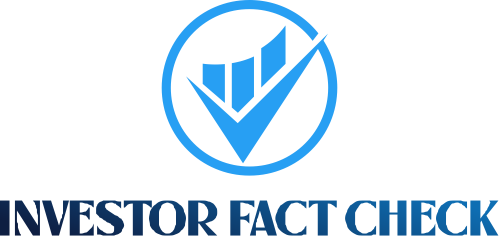Editorial Note: We earn a commission from partner links on Forbes Advisor. Commissions do not affect our editors’ opinions or evaluations.
Currently, the average interest rate on a 30-year fixed mortgage is 6.34%, compared to 6.3% a week ago, according to the Mortgage Research Center.
For borrowers who want to pay off their home faster, the average rate on a 15-year fixed mortgage is 5.40%, up 0.80% from the previous week.
Homeowners who want to lock in a lower rate by refinancing should compare their existing mortgage rate with current market rates to make sure it’s worth the cost to refinance.

30-Year Mortgage Rates Climb 0.54%
Today’s average rate on a 30-year, fixed-rate mortgage is 6.34%, which is 0.54% higher than last week.
The interest plus lender fees, called the annual percentage rate (APR), on a 30-year fixed mortgage is 6.37%. The APR was 6.33% last week.
To get an idea about how much you might pay in interest, consider that the current 30-year, fixed-rate mortgage of 6.34% on a $100,000 loan will cost $621 per month in principal and interest (taxes and fees not included), the Forbes Advisor mortgage calculator shows. The total amount you’ll pay in interest during the loan’s lifespan is $124,428.
15-Year Mortgage Rates Climb 0.80%
Today’s 15-year mortgage (fixed-rate) is 5.4%, up 0.80% from the previous week. The same time last week, the 15-year, fixed-rate mortgage was at 5.35%.
The APR on a 15-year fixed is 5.44%. It was 5.4% a week earlier.
A 15-year, fixed-rate mortgage with today’s interest rate of 5.4% will cost $812 per month in principal and interest on a $100,000 mortgage (not including taxes and insurance). In this scenario, borrowers would pay approximately $46,541 in total interest.
Jumbo Mortgage Rates Climb 0.33%
The current average interest rate on a 30-year, fixed-rate jumbo mortgage (a mortgage above 2025’s conforming loan limit of $806,500 in most areas) is 6.67%—0.33% higher than last week.
A 30-year jumbo mortgage at today’s fixed interest rate of 6.67% will cost you $643 per month in principal and interest per $100,000. That adds up to approximately $131,942 in total interest over the life of the loan.
Mortgage Rate Trends in 2025
After reaching 7.04% in January, the average interest rate for a 30-year fixed mortgage has steadily remained in the mid-to-high 6% range. The 15-year fixed mortgage rate has hovered between the low-6% and mid-to-high 5% range since its January peak of 6.27%.
Rates have trended downward since mid-January 2025, but experts aren’t forecasting further significant decreases in 2025. Rate drops may continue in 2026, especially if the Federal Reserve continues to cut the federal funds rate down.
When Will Mortgage Rates Go Down?
Mortgage rates are influenced by various economic factors, making it difficult to predict when they will drop.
Mortgage rates follow U.S. Treasury bond yields. When bond yields decrease, mortgage rates generally follow suit.
The Federal Reserve’s decisions and global events also play a key role in shaping mortgage rates. If inflation rises or the economy slows, the Fed may lower its federal funds rate. For example, during the Covid-19 pandemic, the Fed reduced rates, which drove interest rates to record lows.
A significant drop in mortgage rates seems unlikely in the near future. However, they may decline if inflation eases or the economy weakens.
How To Calculate Mortgage Payments
Mortgages and mortgage lenders are often a part of purchasing a home, but it can be tricky to understand what you’re paying for—and what you can truly afford.
Using a mortgage calculator can help you estimate your monthly mortgage payment based on your interest rate, purchase price, down payment and other expenses.
Here’s what you’ll need in order to calculate your monthly mortgage payment:
- Home price
- Down payment amount
- Interest rate
- Loan term
- Taxes, insurance and any HOA fees
Find the Best Mortgage Lenders of 2025
How Are Mortgage Rates Determined?
Multiple factors affect the interest rate for a mortgage, including the economy’s overall health, benchmark interest rates and borrower-specific factors.
The Federal Reserve’s rate decisions and inflation can influence rates to move higher or lower. Although the Fed raising rates doesn’t directly cause mortgage rates to rise, an increase to its benchmark interest rate makes it more expensive for banks to lend money to consumers. Conversely, rates tend to decrease during periods of rate cuts and cooling inflation.
Home buyers can make several moves to improve their finances and qualify for competitive rates. One is having a good or excellent credit score, which ranges from 670 to 850. Another is maintaining a debt-to-income (DTI) ratio below 43%, which implies less risk of being unable to afford the monthly mortgage payment.
Further, making a minimum 20% down payment can help you avoid private mortgage insurance (PMI) on conventional home loans. If you can afford the larger monthly payment, 15-year home loans have lower rates than a 30-year term.
Frequently Asked Questions (FAQs)
What is a good mortgage rate?
Average 30-year fixed mortgage rates land in the mid-6% range, so any rate at or below this range would be considered a good rate. However, several factors impact mortgage rates, including the repayment term, loan type and borrower’s credit score, so if you are considering applying for a mortgage, it’s a good idea to compare rates from several lenders to find the best rate for your situation.
How long can you lock in a mortgage rate?
Most rate locks last 30 to 60 days and your lender may not charge a fee for this initial period. However, extending the rate lock period up to 90 or 120 days is possible, depending on your lender, but additional costs may apply.
Should I choose a fixed- or adjustable-rate mortgage?
Choosing between a fixed- or adjustable-rate mortgage (ARM) depends on your financial situation. A fixed-rate mortgage suits those who want consistent monthly payments throughout the loan term without worrying about fluctuations in their rate or payments in response to market changes. If mortgage rates are low, securing a fixed rate can save you money in the long run.
An ARM, on the other hand, may appeal to those who want a lower initial rate and monthly payment. However, you also run the risk of ending up with higher payments if your rate fluctuates. If you expect your income to rise, you may feel confident handling these potential payment increases. These mortgages can also work well for those who plan to live in a home for only a few years, as you might sell or move before the rate adjusts.





